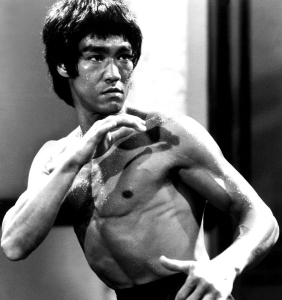Isometric training is a strength training method where the muscle produces a force, but there is no change in muscle length. This is very similar to isometric stretching, where the stretch is held in the same position and the muscle does not change in length.
Isometric training is different from isotonic and isokinetic contractions that both involve changes in muscle length producing movement. An isometric contraction does not produce movement because the muscle does not change in length.
Isometric training as a form of strength training was made popular by Bruce Lee, one of the greatest
martial artists of all time. This training has specific benefits that are useful for all athletes looking to increase their strength.
The main benefit of this training is that it provides increases in strength for static contractions. This is of particular importance in sports that require great strength with little movement, such as: some martial arts, gymnastics or dance.
However, isometric training also produces specific muscle strength increases in that the increase in muscle strength is greatest at the joint angle that the static contraction is performed at. That is, if you hold an isometric contraction at 110 degrees around your elbow, your strength gains are greatest for this angle. This may seem trivial, but for an athlete who is weak at a particular angle isometric training at this angle will help to illuminate the imbalance.
Isometric exercises include: pushing against a wall, holding a push-up position, holding dumbbells out at 90 degrees from the shoulder etc. Isometric training is easy to perform and requires little to no equipment to be performed. Yoga often uses this training method to increase muscular strength.


